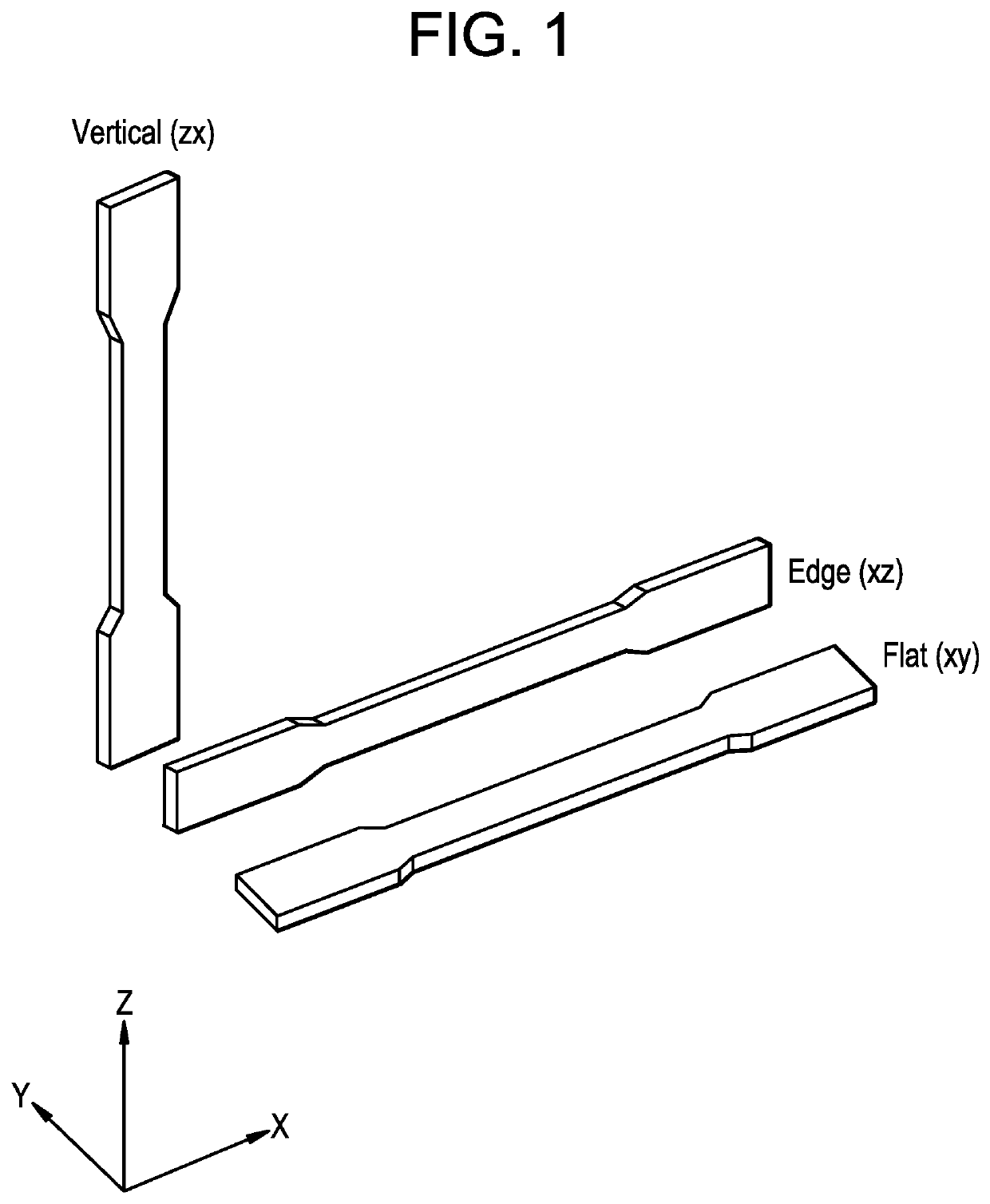Filaments comprising ionomers and use in fused filament fabrication
a technology of fused filament and ionomer, which is applied in the field of filaments comprising ionomers and use in fused filament fabrication, can solve the problems of macroscopic bubbles, rough surface, and high cost of the above-mentioned process
- Summary
- Abstract
- Description
- Claims
- Application Information
AI Technical Summary
Benefits of technology
Problems solved by technology
Method used
Image
Examples
examples
[0060]The exemplary compounds identified by “E” in the tables below are intended only to further illuminate and not to limit the scope of compounds, processes, and articles described and recited herein. Comparative examples are identified in the tables below by “C”.
Materials
[0061]The following ionomers were used to prepare filaments for printing 3D articles.
[0062]C1: An ethylene / methacrylic acid copolymer comprising ethylene and 19 wt % of methacrylic acid in which 45% of the carboxylic acid moieties are neutralized with sodium ions and available commercially from Taulman3D as T-Lyne.
[0063]C2: An ethylene / methacrylic acid copolymer comprising ethylene and 11 wt % of methacrylic acid in which 37% of the carboxylic acid moieties are neutralized with sodium ions.
[0064]C3: An ethylene / methacrylic acid copolymer comprising ethylene and 19 wt % of methacrylic acid in which 33% of the carboxylic acid moieties are neutralized with magnesium ions.
[0065]E1: An ethylene / methacrylic acid copoly...
example e7
[0090]A 270 mm×10 mm×10 mm test bar (L×W×H) printed from a filament comprising the ionomer of E2 was printed and tested using the curl test. E2 had a curl (height of displacement at midpoint) of 0.025 mm.
PUM
| Property | Measurement | Unit |
|---|---|---|
| weight percent | aaaaa | aaaaa |
| temperatures | aaaaa | aaaaa |
| diameter | aaaaa | aaaaa |
Abstract
Description
Claims
Application Information
 Login to View More
Login to View More - R&D
- Intellectual Property
- Life Sciences
- Materials
- Tech Scout
- Unparalleled Data Quality
- Higher Quality Content
- 60% Fewer Hallucinations
Browse by: Latest US Patents, China's latest patents, Technical Efficacy Thesaurus, Application Domain, Technology Topic, Popular Technical Reports.
© 2025 PatSnap. All rights reserved.Legal|Privacy policy|Modern Slavery Act Transparency Statement|Sitemap|About US| Contact US: help@patsnap.com

